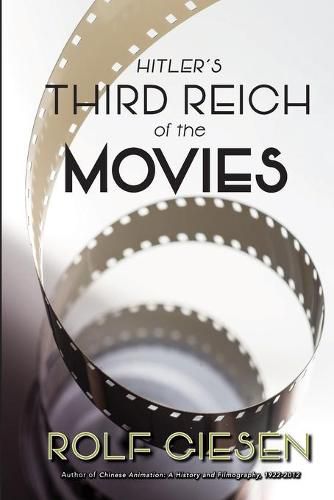Readings Newsletter
Become a Readings Member to make your shopping experience even easier.
Sign in or sign up for free!
You’re not far away from qualifying for FREE standard shipping within Australia
You’ve qualified for FREE standard shipping within Australia
The cart is loading…






This title is printed to order. This book may have been self-published. If so, we cannot guarantee the quality of the content. In the main most books will have gone through the editing process however some may not. We therefore suggest that you be aware of this before ordering this book. If in doubt check either the author or publisher’s details as we are unable to accept any returns unless they are faulty. Please contact us if you have any questions.
We’re here to stay! was what Nazi Propaganda Minister Joseph Goebbels assured, speaking to members of the German film industry in early 1933.
There were many who agreed with him like Karl Ritter who introduced Mickey Mouse to German audiences in 1930 and in 1933 began to produce propaganda films like Hitler Youth Quex In our cinemas we want to see nothing else than convinced National Socialists!
For a while German film export languished, but with WW2 the Nazis conquered cinemas all over Europe and flooded them with their movies, propaganda as well as allegedly apolitical entertainment. In the new Germany one can laugh again! the propaganda promised but it was a different way of laughing. It was gallows humor.
This book deals not only with Hitler’s personal cinematic likes and dislikes, with the ambitions of Leni Riefenstahl, with the idyllic world of German animation, with film emigration, with anti-Semitic films, Dachau and Auschwitz. There is also a back story to tell about certain German silents like Metropolis and why the way of Teutonic imagery didn’t end with the death of the Nazi leaders in 1945, why their way of laughing is still alive on German screens…
From the Foreword:
It is also a story about family entertainment in Nazi times, about animated films that were supposed to fulfill the Nazis’ dream of creating a cartoon film industry that would rival Disney and make Europe’s children happy, while the little captives of a children’s barrack in Auschwitz who dreamed of Disney’s Snow White, too, thanks to murals painted by a Jewish artist, ended in burning fiery furnaces.
About the author
Rolf Giesen, a film historian, worked for 40 years writing, collecting, supervising, lecturing in Germany and abroad, particularly China. He is one of Europe’s leading experts on animation and VFX.
$9.00 standard shipping within Australia
FREE standard shipping within Australia for orders over $100.00
Express & International shipping calculated at checkout
This title is printed to order. This book may have been self-published. If so, we cannot guarantee the quality of the content. In the main most books will have gone through the editing process however some may not. We therefore suggest that you be aware of this before ordering this book. If in doubt check either the author or publisher’s details as we are unable to accept any returns unless they are faulty. Please contact us if you have any questions.
We’re here to stay! was what Nazi Propaganda Minister Joseph Goebbels assured, speaking to members of the German film industry in early 1933.
There were many who agreed with him like Karl Ritter who introduced Mickey Mouse to German audiences in 1930 and in 1933 began to produce propaganda films like Hitler Youth Quex In our cinemas we want to see nothing else than convinced National Socialists!
For a while German film export languished, but with WW2 the Nazis conquered cinemas all over Europe and flooded them with their movies, propaganda as well as allegedly apolitical entertainment. In the new Germany one can laugh again! the propaganda promised but it was a different way of laughing. It was gallows humor.
This book deals not only with Hitler’s personal cinematic likes and dislikes, with the ambitions of Leni Riefenstahl, with the idyllic world of German animation, with film emigration, with anti-Semitic films, Dachau and Auschwitz. There is also a back story to tell about certain German silents like Metropolis and why the way of Teutonic imagery didn’t end with the death of the Nazi leaders in 1945, why their way of laughing is still alive on German screens…
From the Foreword:
It is also a story about family entertainment in Nazi times, about animated films that were supposed to fulfill the Nazis’ dream of creating a cartoon film industry that would rival Disney and make Europe’s children happy, while the little captives of a children’s barrack in Auschwitz who dreamed of Disney’s Snow White, too, thanks to murals painted by a Jewish artist, ended in burning fiery furnaces.
About the author
Rolf Giesen, a film historian, worked for 40 years writing, collecting, supervising, lecturing in Germany and abroad, particularly China. He is one of Europe’s leading experts on animation and VFX.